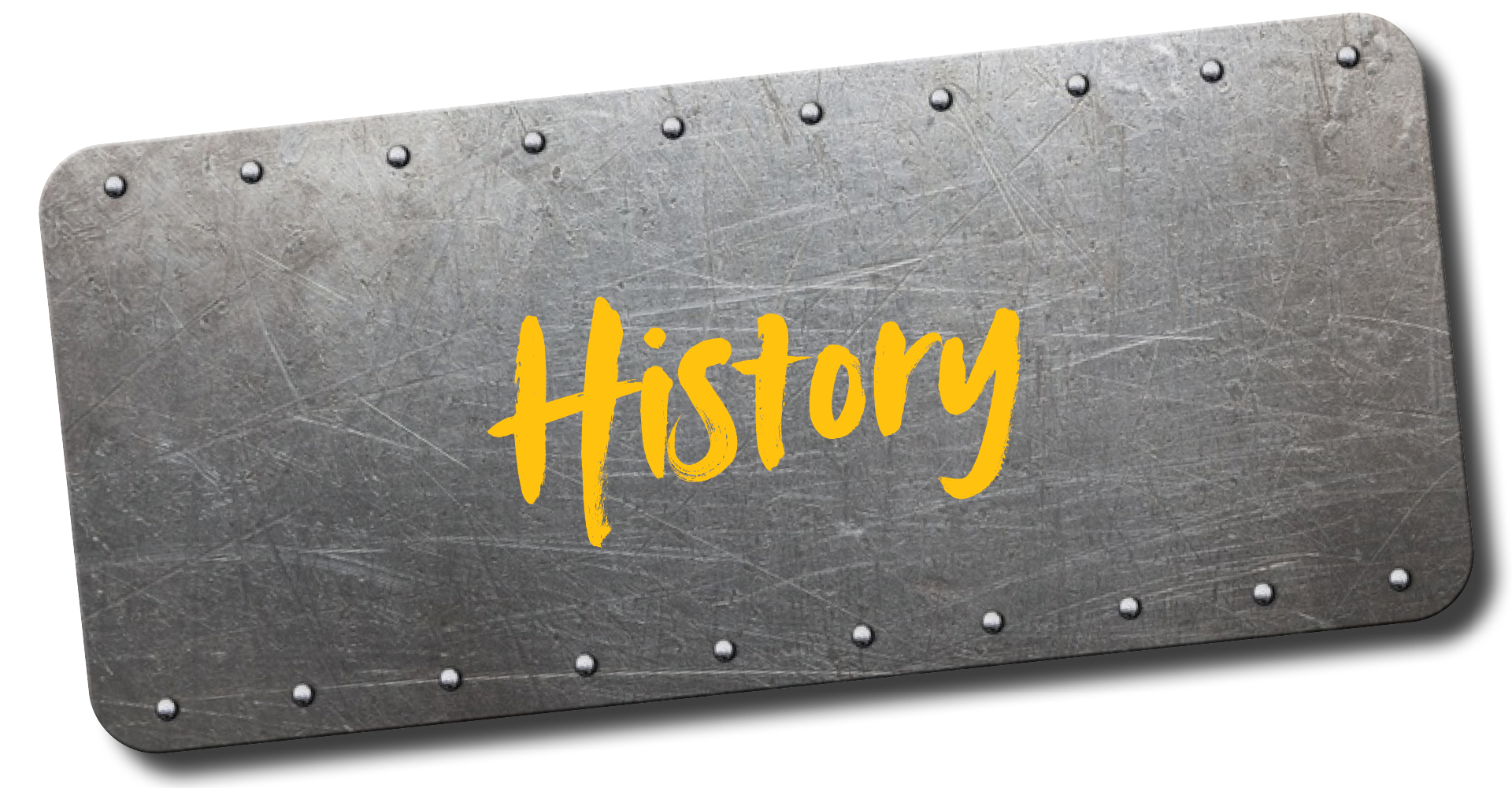
1940
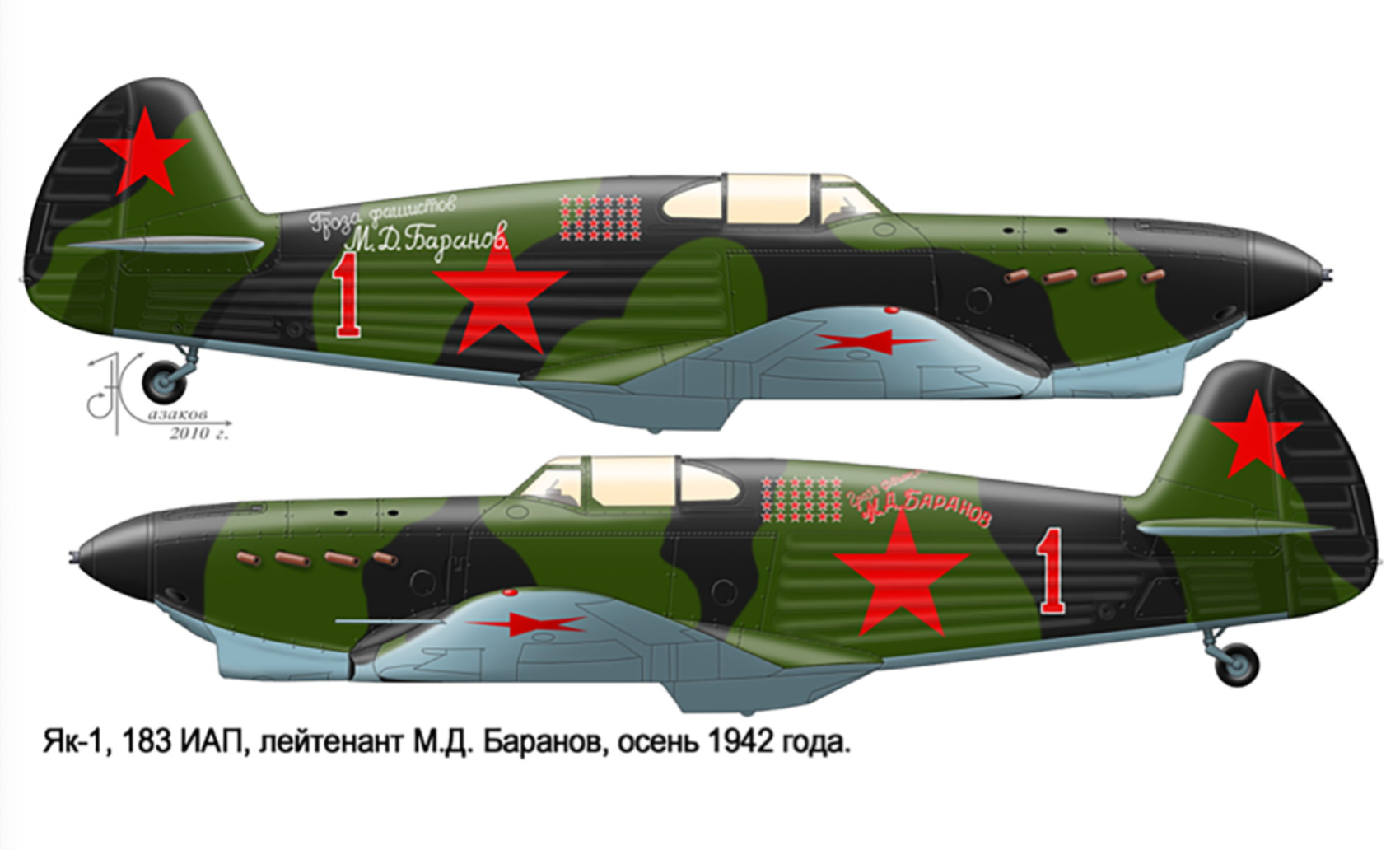
1940 - Yak 1 design first flight

1940 - Yak 1 design first flight
1940
1943
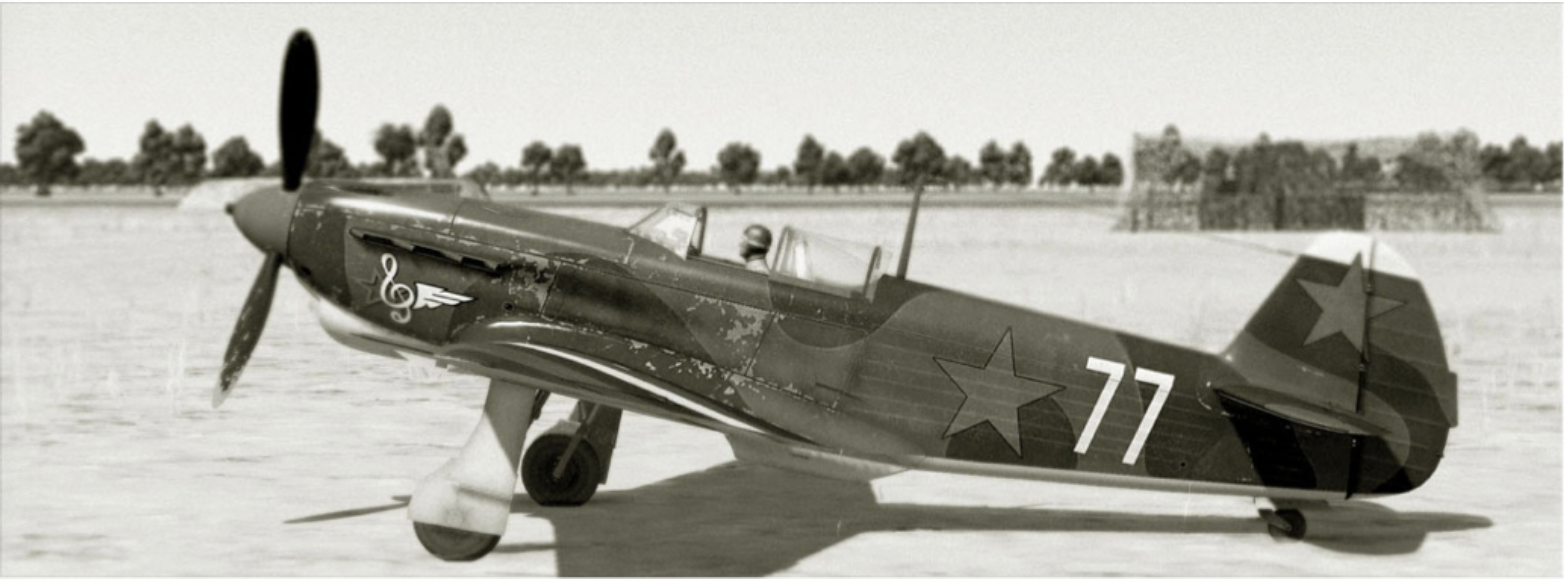
1943 - Yak-1 M design to remove weight and drag as promised higher horsepower engines are still unreliable.
1943 - Alexander Yakovlev is not completely satisfied and starts a new wing design with a clean sheet of paper. This is designated Yak-3. The aircraft features a wooden wing with an aluminium main spar and a steel tube fuselage with plywood and fabric covering. The aircraft performs better than expected.
1943

1943 - Yak-1 M design to remove weight and drag as promised higher horsepower engines are still unreliable.
1943 - Alexander Yakovlev is not completely satisfied and starts a new wing design with a clean sheet of paper. This is designated Yak-3. The aircraft features a wooden wing with an aluminium main spar and a steel tube fuselage with plywood and fabric covering. The aircraft performs better than expected.
1944
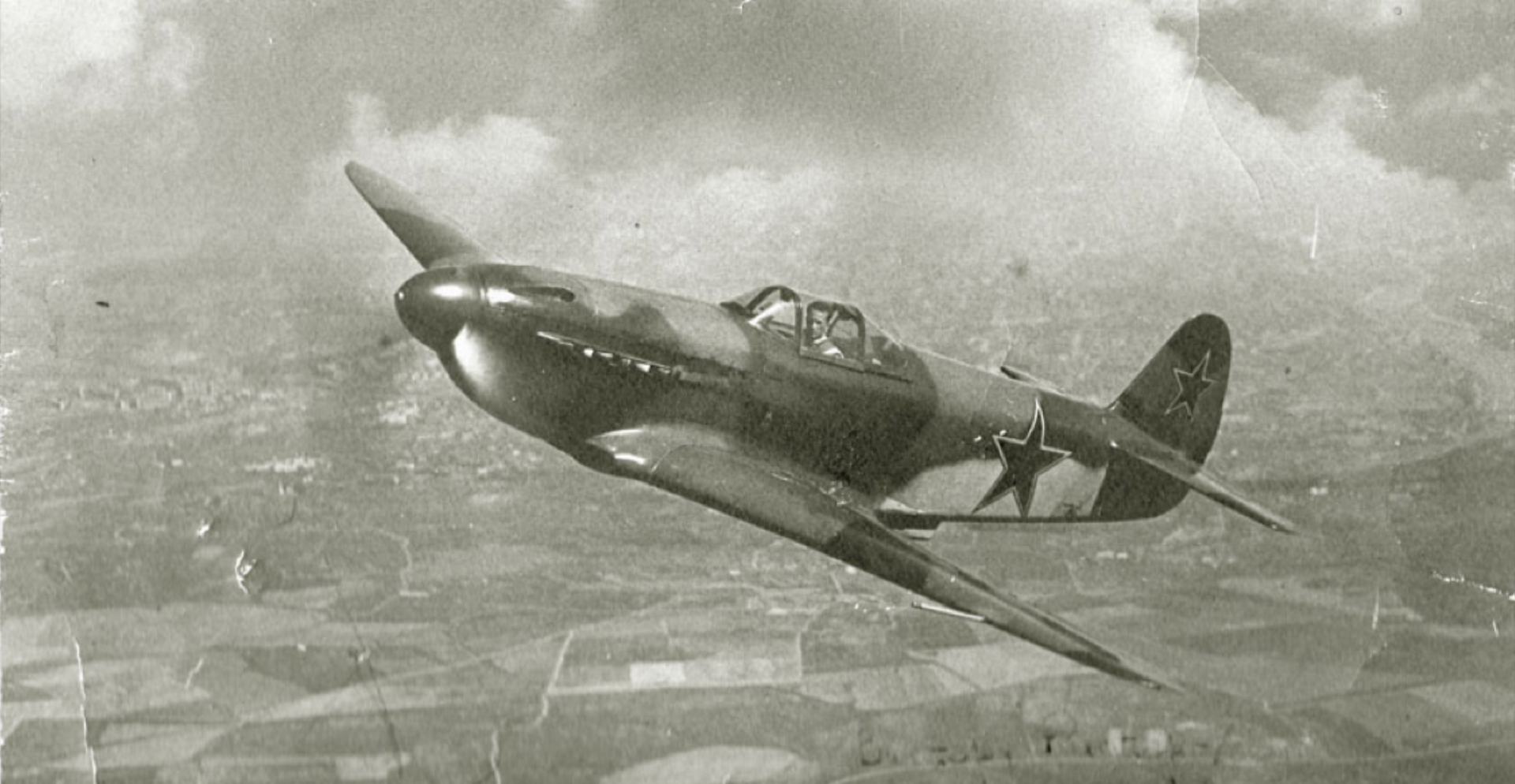
1944 - In late summer the Yak-3 first appears over the Eastern front and quickly gains a reputation for high performance in combat, reliability and ease of maintenance. It is loved by groundcrew and pilots alike and gains the nickname Ubiytsa (killer).
1944 - Dec. Featuring an experimental VK-108 engine rated at 1850 Hp the Yak-3 achieves 463 mph during testing.

1944 - In late summer the Yak-3 first appears over the Eastern front and quickly gains a reputation for high performance in combat, reliability and ease of maintenance. It is loved by groundcrew and pilots alike and gains the nickname Ubiytsa (killer).
1944 - Dec. Featuring an experimental VK-108 engine rated at 1850 Hp the Yak-3 achieves 463 mph during testing.
1944
1945
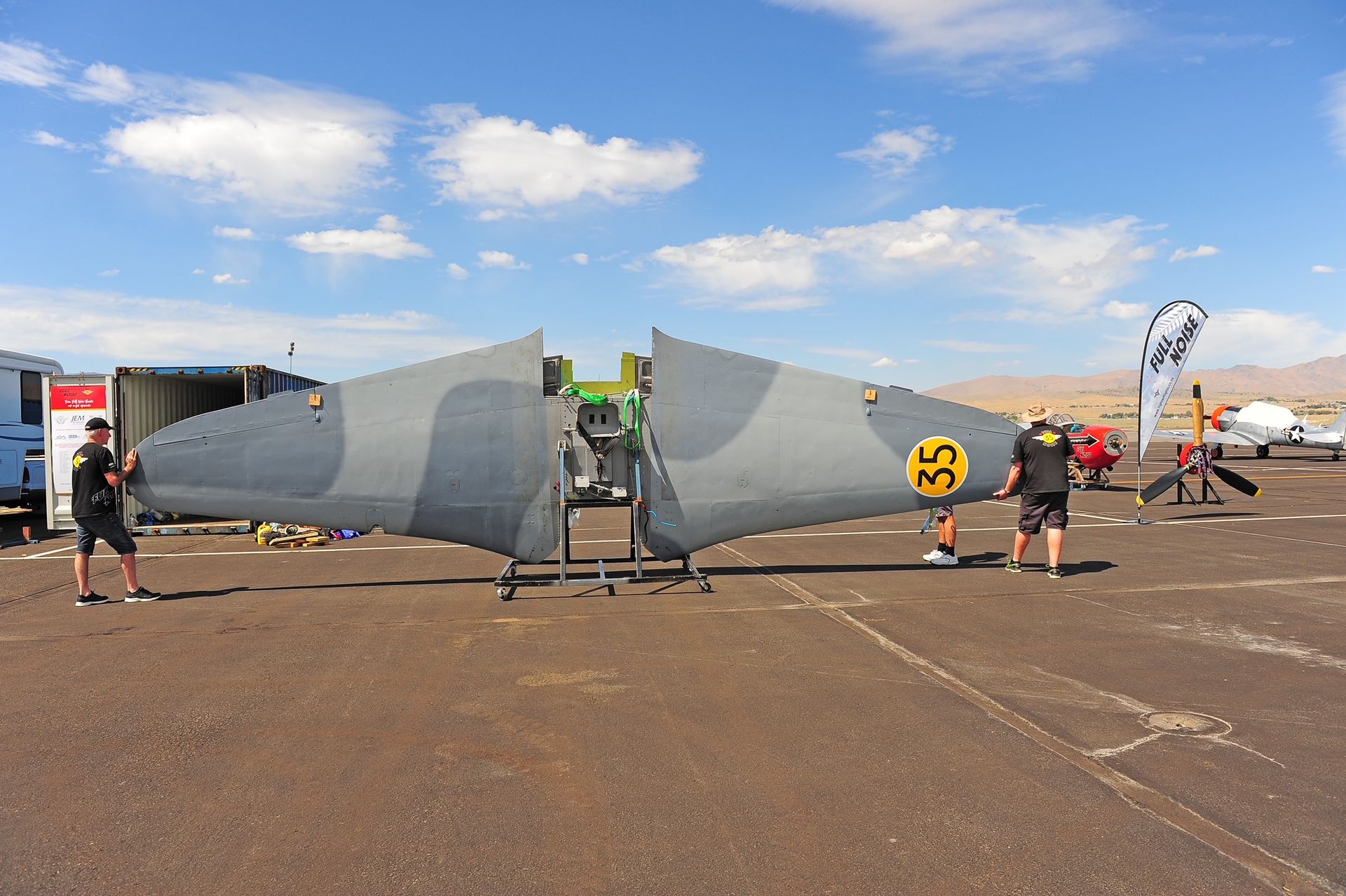
1945 - With more aluminium available the aircraft is built with an all metal wing.
1945

1945 - With more aluminium available the aircraft is built with an all metal wing.
1946

1946 - After capturing German jet engines the Yak-3 fuselage is mounted on top of a Juno 004 jet engine from a Me 262. It achieves 491 mph in level flight.
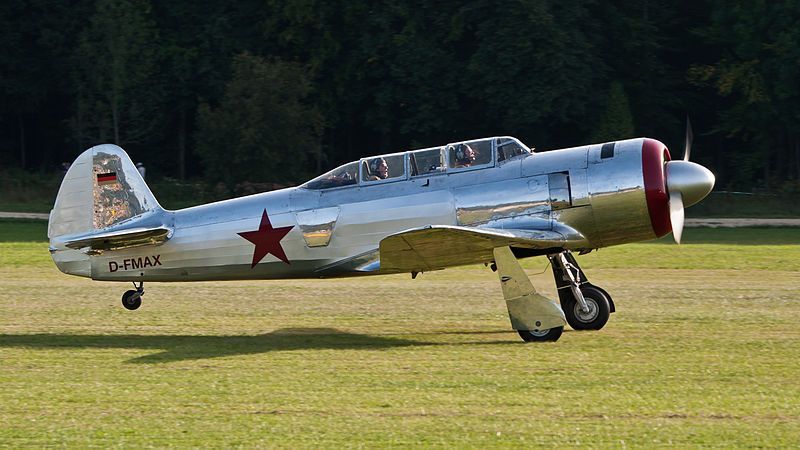
1946 - production ceases with 4848 aircraft produced
1946 - Yakovlev uses the wing and tail group of the Yak-3 in a new trainer design designated Yak-11. These aircraft become a rich source of parts for future Yak-3 builds and restorations.

1946 - After capturing German jet engines the Yak-3 fuselage is mounted on top of a Juno 004 jet engine from a Me 262. It achieves 491 mph in level flight.
1946

1946 - Production ceases with 4848 aircraft produced
1946 - Yakovlev uses the wing and tail group of the Yak-3 in a new trainer design designated Yak-11. These aircraft become a rich source of parts for future Yak-3 builds and restorations.
1990
1990
- After the iron curtain comes down Russian business is in need of foreign investment. A glaring omission in the Warbird world is identified by the Yakovlev design bureau. There are no Russian aircraft of the Great Patriotic War flying in modern times. The design bureau discover the original drawings, jigs and design information for the Yak-3.
1990
1990
- After the iron curtain comes down Russian business is in need of foreign investment. A glaring omission in the Warbird world is identified by the Yakovlev design bureau. There are no Russian aircraft of the Great Patriotic War flying in modern times. The design bureau discover the original drawings, jigs and design information for the Yak-3.
1992

1992 - Flight Magic of Santa Monica California is approached and a deal is brokered for Yakovlev to design and build 20 new airframes. They feature an American Allison engine and DC-3 prop as no Russian equivalent is available.

1992 - Flight Magic of Santa Monica California is approached and a deal is brokered for Yakovlev to design and build 20 new airframes. They feature an American Allison engine and DC-3 prop as no Russian equivalent is available.
1992
1995
1995
- Yak-3 is sold to Bill Destefani, the owner and pilot of the Reno race Mustang Strega.
1995
1995
- Yak-3 is sold to Bill Destefani, the owner and pilot of the Reno race Mustang Strega.
1996
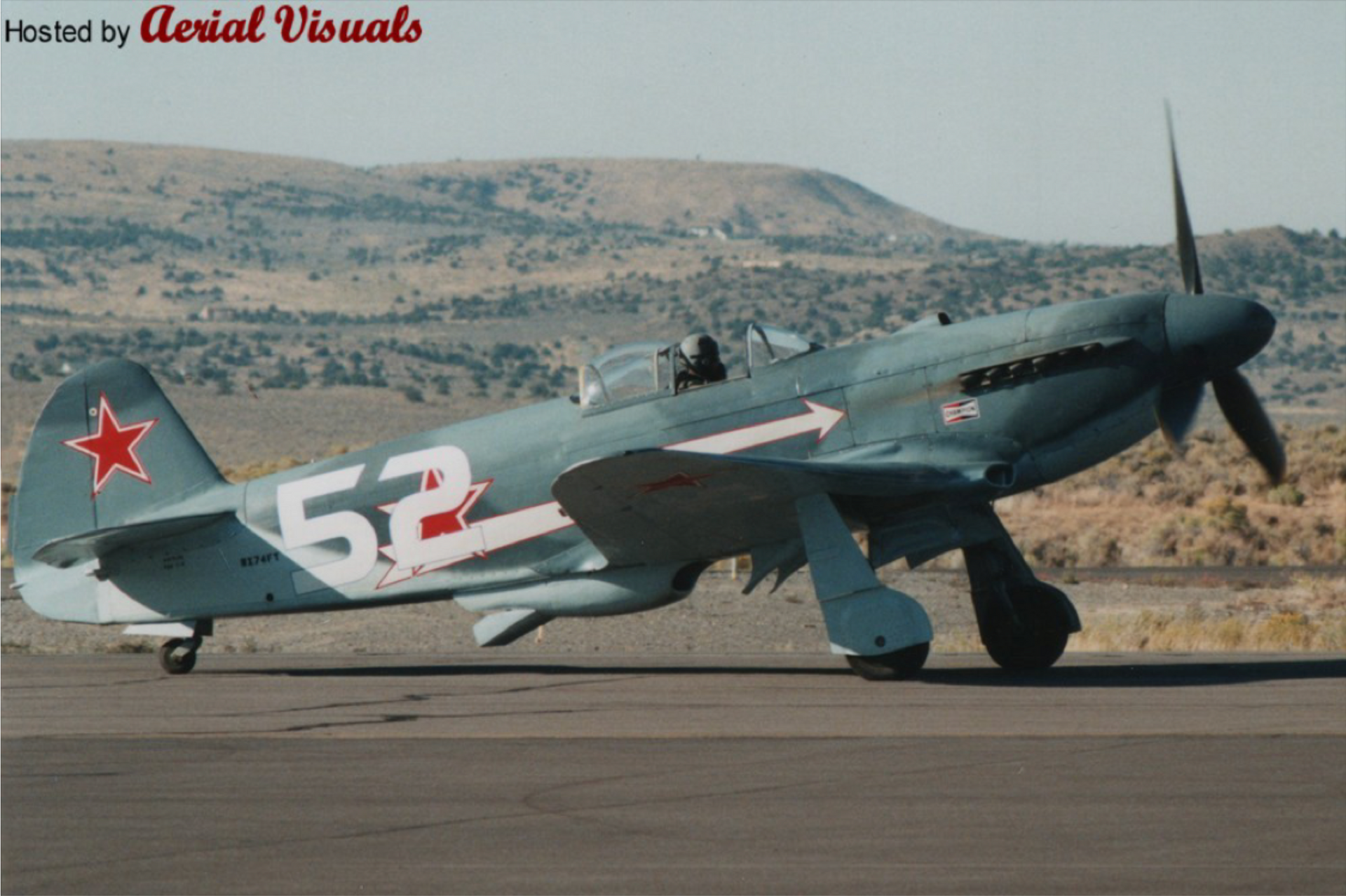
1996 - Pilot Sherman Smoot flys the Yak at the Reno Air Races. He averages 324 mph in one race but fails to finish the week.

1996 - Pilot Sherman Smoot flys the Yak at the Reno Air Races. He averages 324 mph in one race but fails to finish the week.
1996
1997
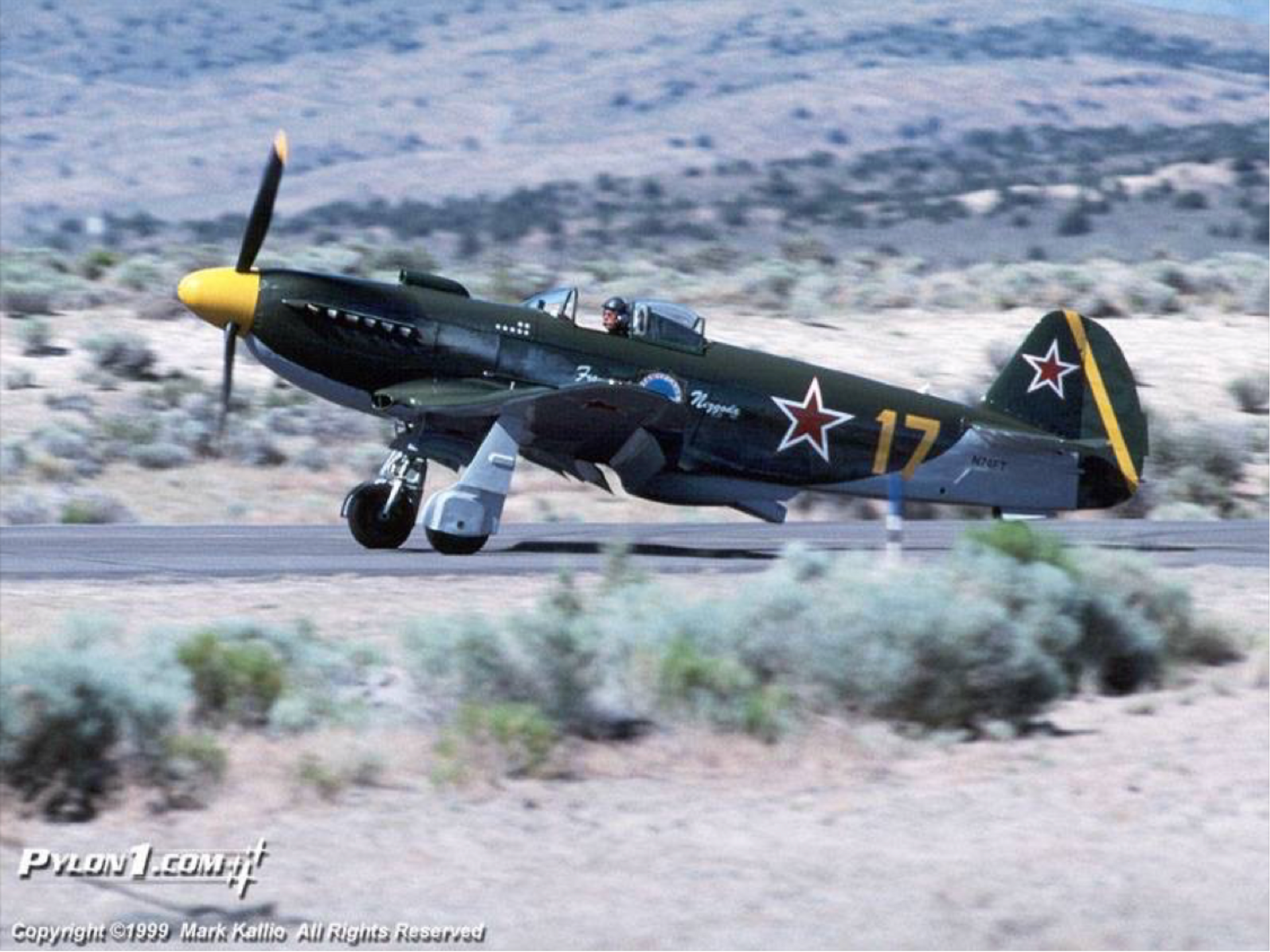
1997
- Bill Nezgoda buys the Yak.
1997

1997 - Bill Nezgoda buys the Yak.
1999
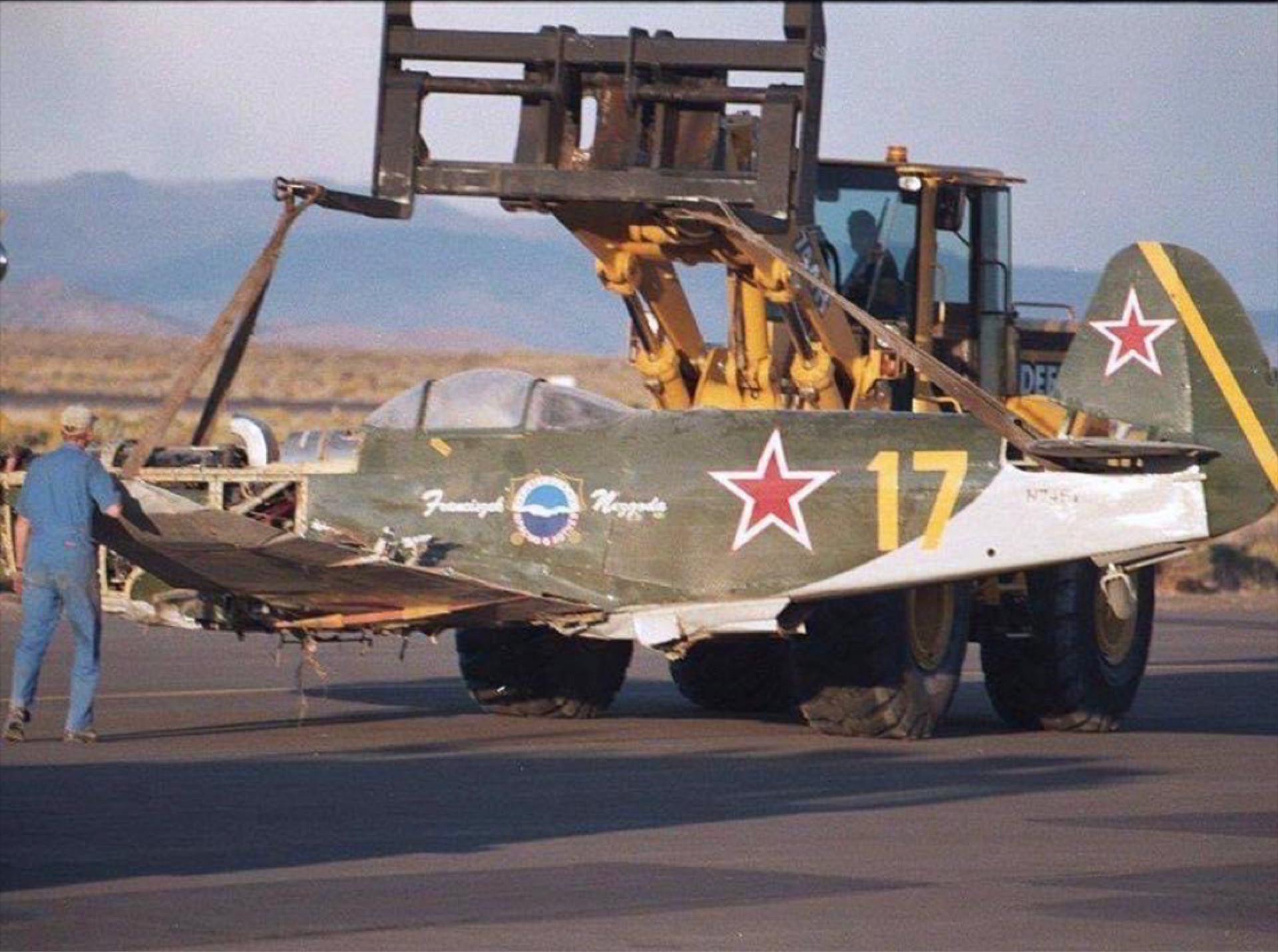
1999 - Nezgoda crashes on take-off at the Reno Air Races when attempting to qualify. He survives relatively unscathed.

1999 - Nezgoda crashes on take-off at the Reno Air Races when attempting to qualify. He survives relatively unscathed.
1999
2000
2000 - Chris Prevost and Dan Vance buy the wreck and replace the original wing with that of an Egyptian Air Force Yak-11.
2000
2000 - Chris Prevost and Dan Vance buy the wreck and replace the original wing with that of an Egyptian Air Force Yak-11.
2004
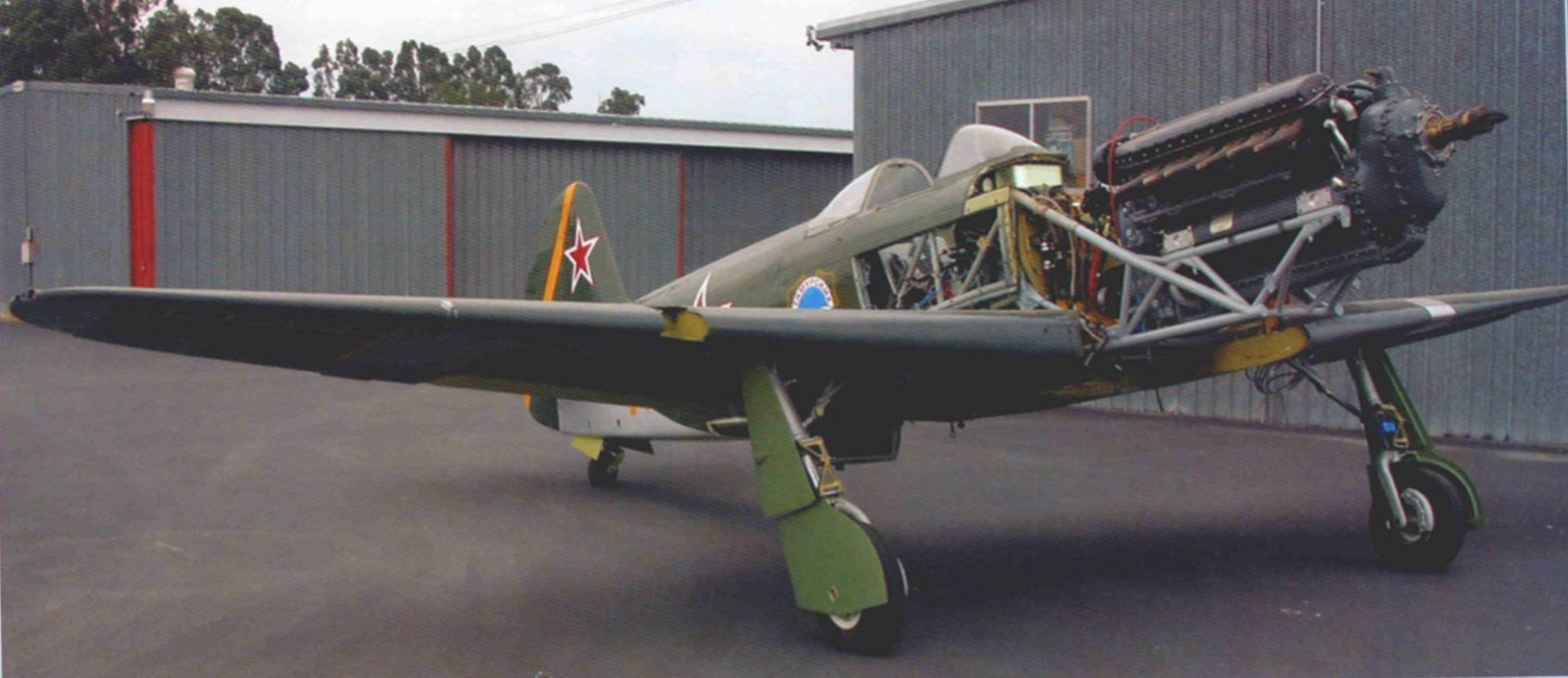
2004 - Graeme Frew buys the project and in November it arrives at Omaka.

2004 - Graeme Frew buys the project and in November it arrives at Omaka.
2004
2009
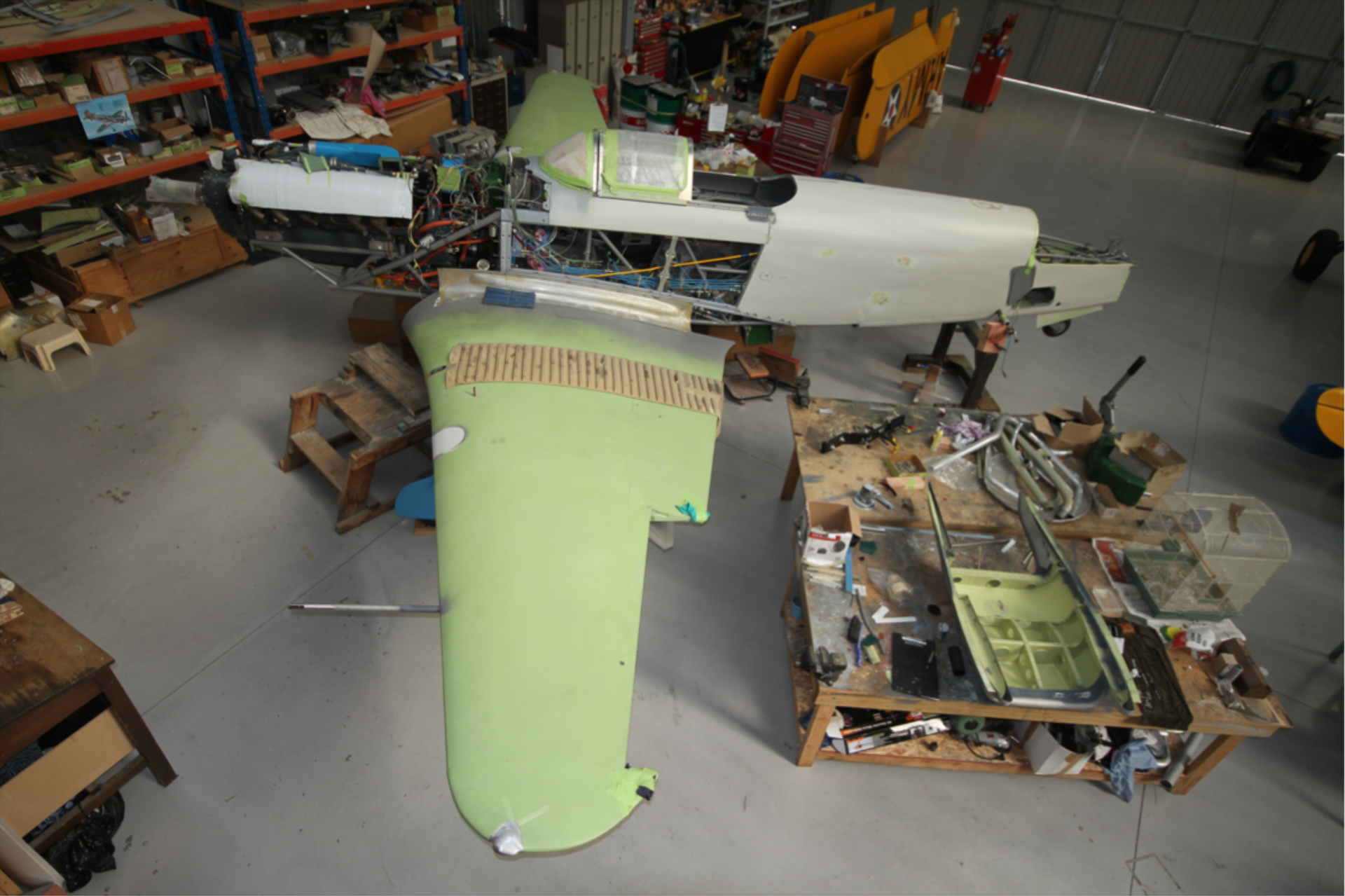
2009 - Jay McIntyre and his team at JEM Aviation commence a full time restoration and incorporate a second seat at the owners request.
2009

2009 - Jay McIntyre and his team at JEM Aviation commence a full restoration and incorporate a second seat at the owners request.
2012
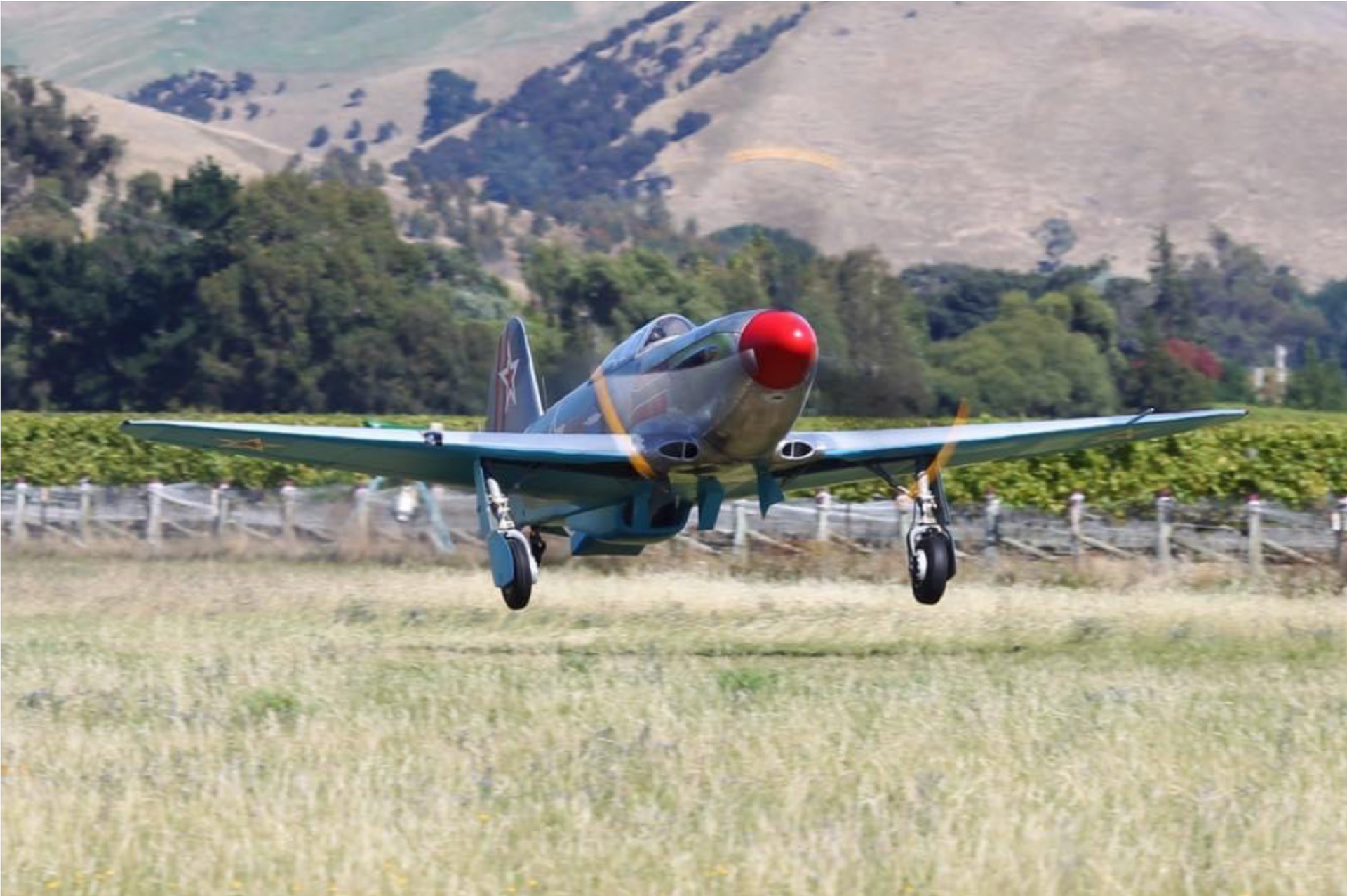
2012 - March 26 First post flight restoration in the hands of Frank Parker.

2012 - March 26 First post flight restoration in the hands of Frank Parker.
2012
2017
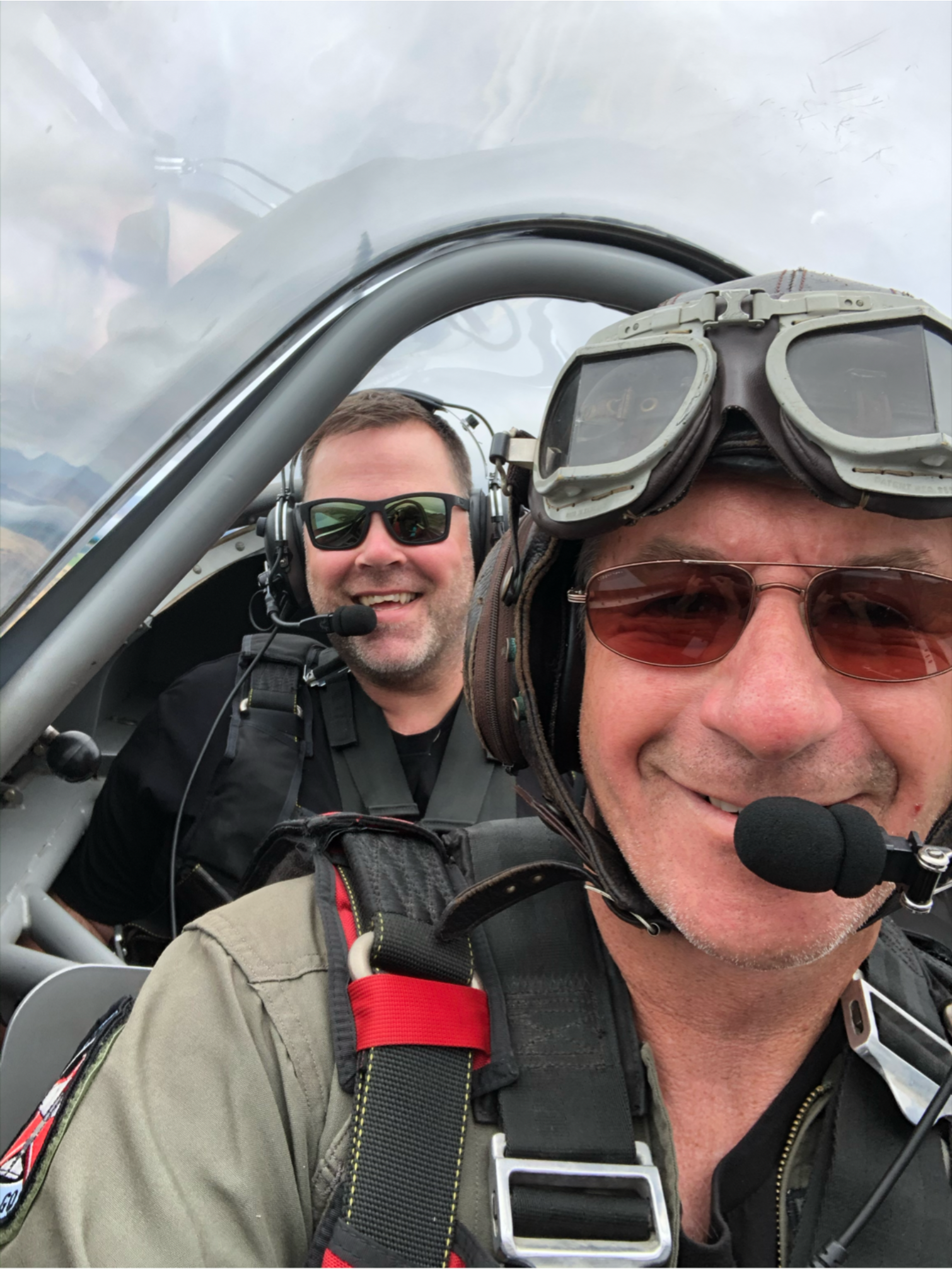
2017 - Fighter Flights Ltd is formed to operate the Yak-3 for joyrides. We have since shared the experience and thrill of flying in one of the best handling and performing fighter aircraft of WW II with 100s of happy customers.
2017

2017 - Fighter Flights Ltd is formed to operate the Yak-3 for joyrides. We have since shared the experience and thrill of flying in one of the best handling and performing fighter aircraft of WW II with 100s of happy customers.
2017
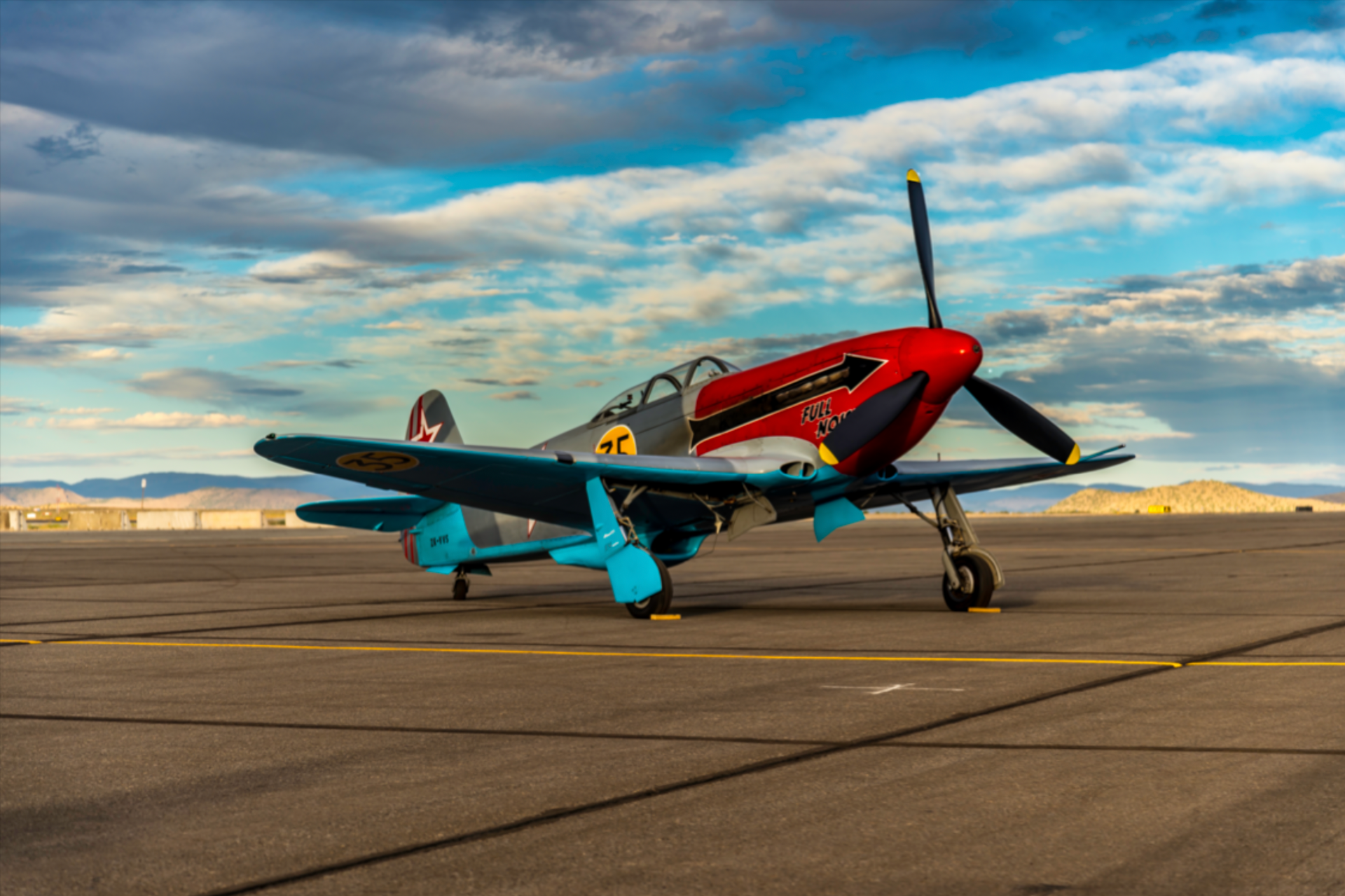
2017 - Our Yak-3 is christened Full Noise and shipped to California for fitment of a Joe Yancey built and sponsored 2000 hp engine. Full Noise competes at the Reno Air Races as the first ever Kiwi team to race. Unfortunately the race engine doesn’t work out but after an all night engine change FN makes the Gold final on the stock engine.

2017 - Our Yak-3 is christened Full Noise and shipped to California for fitment of a Joe Yancey built and sponsored 2000 hp engine. Full Noise competes at the Reno Air Races as the first ever Kiwi team to race. Unfortunately the race engine doesn’t work out but after an all night engine change FN makes the Gold final on the stock engine.
2017
2018
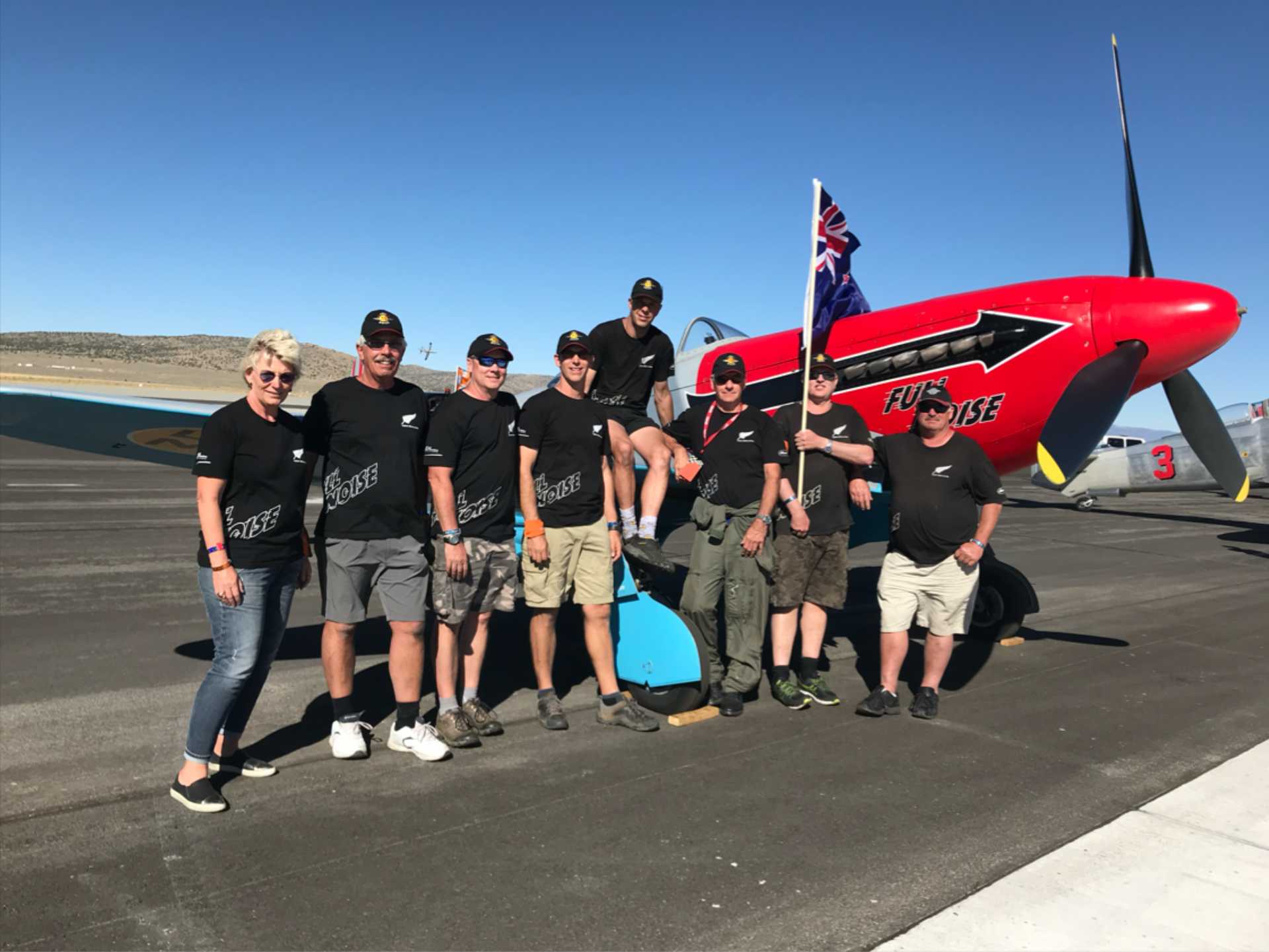
2018 - Team Full Noise again makes the trip to race at Reno. The Yak qualifies 6th at 362 mph and runs in the Gold all week.
2018

2018 - Team Full Noise again makes the trip to race at Reno. The Yak qualifies 6th at 362 mph and runs in the Gold all week.
2020

2020 - Full Noise travels to Oreti Beach in Invercargill to try at a NZ 3 km speed record. On the 23rd of Feb she successfully speeds across the beach for an average of 559 km/hr over four passes setting a NZ record.

2020 - Full Noise travels to Oreti Beach in Invercargill to try at a NZ 3 km speed record. On the 23rd of Feb she successfully speeds across the beach for an average of 559 km/hr over four passes setting a NZ record.
2020
2023
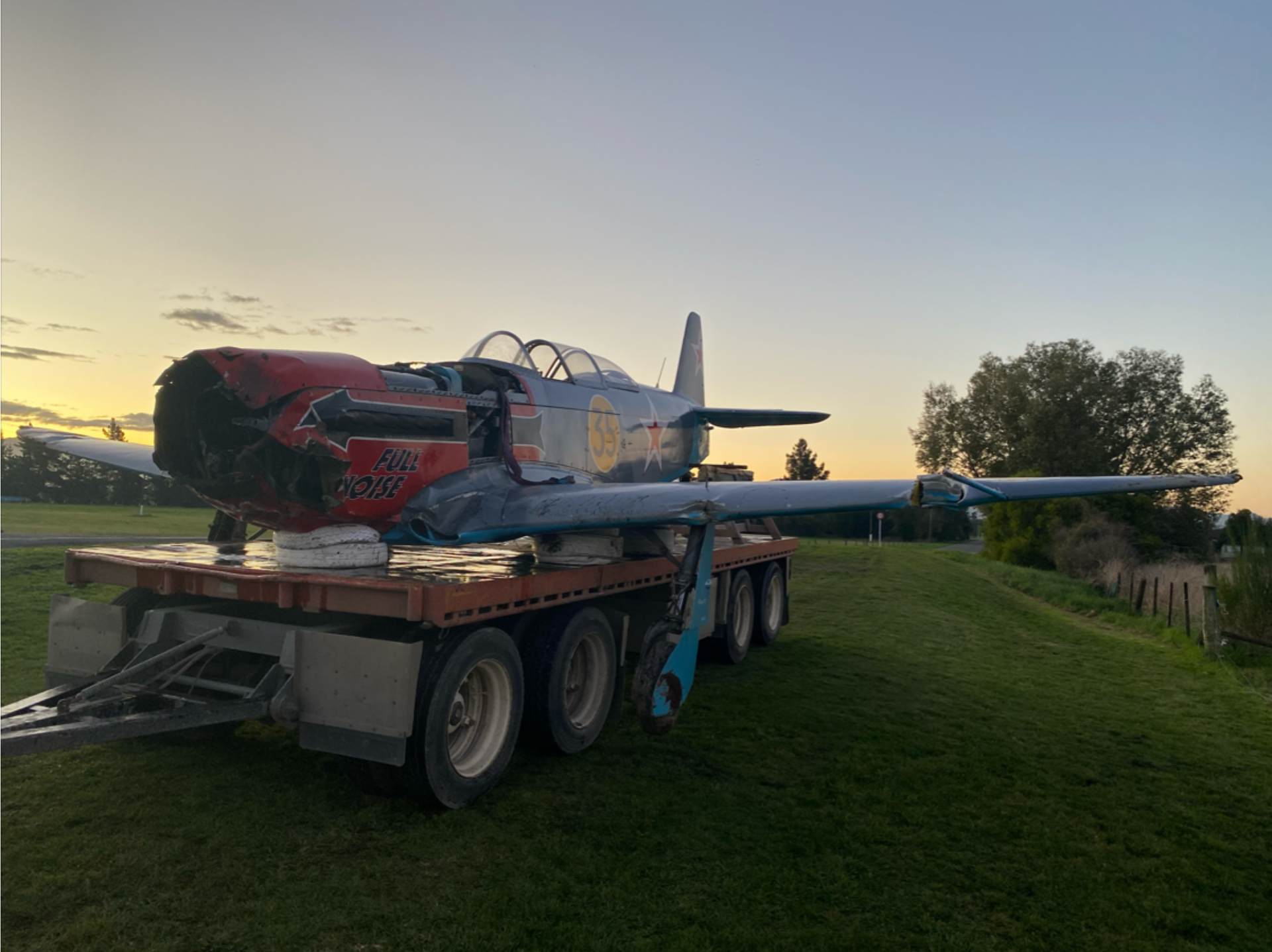
2023 - (May) After aborting a take-off at Omaka Full Noise is damaged when she goes through the end fence. Pilot is unhurt.
2023 - (July) We decide to embark on the rebuild of Full Noise; she deserves that.
2023

2023 - (May) After aborting a take-off at Omaka Full Noise is damaged when she goes through the end fence. Pilot is unhurt.
2023 - (July) We decide to embark on the rebuild of Full Noise; she deserves that.
Exciting News for Aviation Enthusiasts and Full Noise fans!
Introducing "Chronicles of Full Noise" Newsletter – Your Insider Pass to the Restoration Journey of Yak-3 Full Noise! Join us for an incredible adventure filled with exclusive behind-the-scenes updates, captivating stories, stunning visuals of the rebuild and exciting previews of our future plans!
Subscribe today to become a part of the journey and receive our newsletter directly in your inbox, securing your spot as one of the first to stay updated!
FULL NOISE | WEBSITE DESIGNED BY VANILLA HAYES
